Soichi Mizutani designs Iguaneye Tokyo shoe store as a faceted white cave
Japanese interior designer Soichi Mizutani used computer algorithms to create a human-sized "cave" for Tokyo's Iguaneye Aoyama shoe store (+ slideshow).
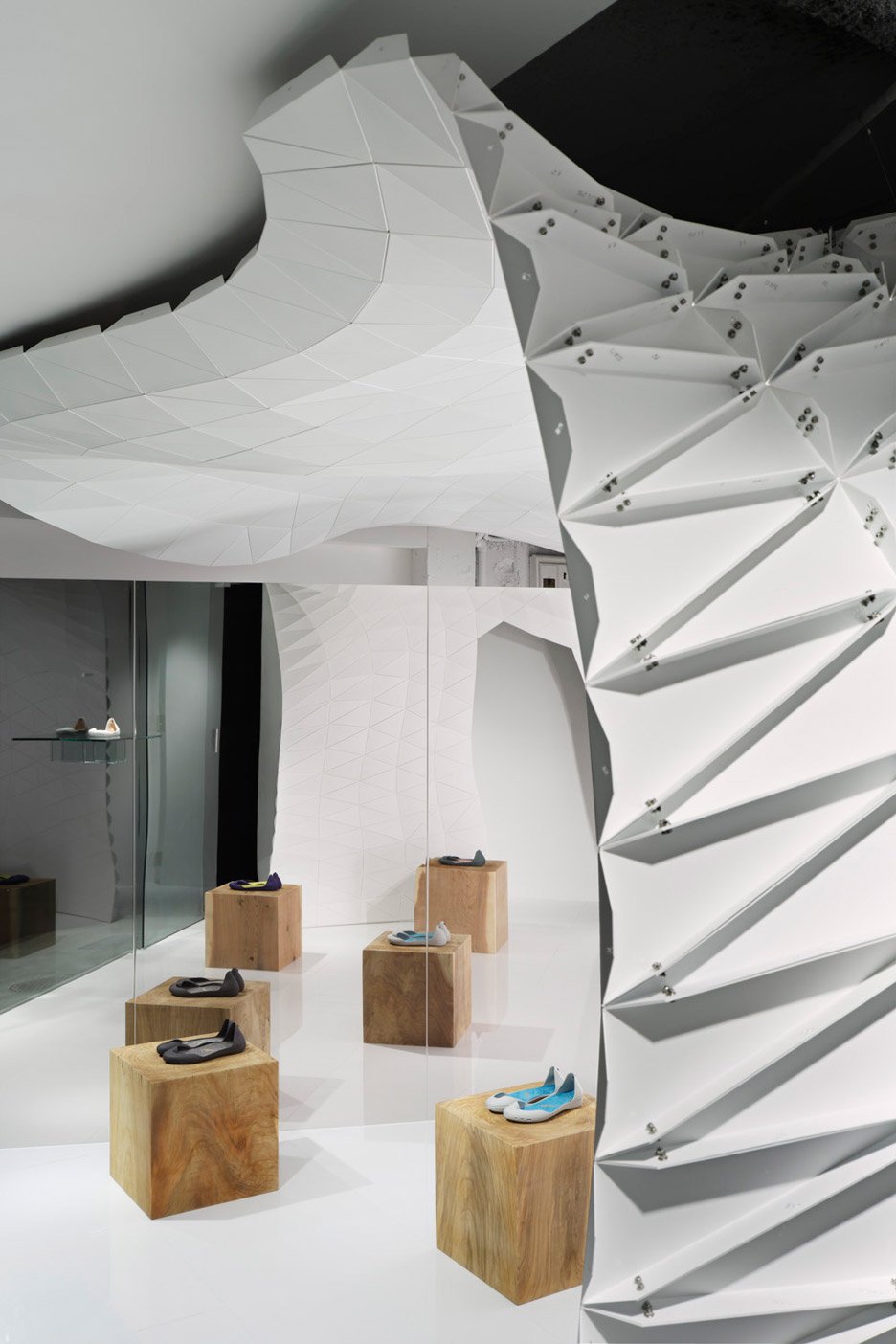
Mizutani based the three-dimensional shell for the interior on the unusual shape of the brand's footwear, and used a computer programme to generate the complex geometry.
"My image of the space inspired from the Iguaneye shoe might be a shelter for our ancestors, a cave," said the designer, who has also designed interiors for a bowling alley in the city.
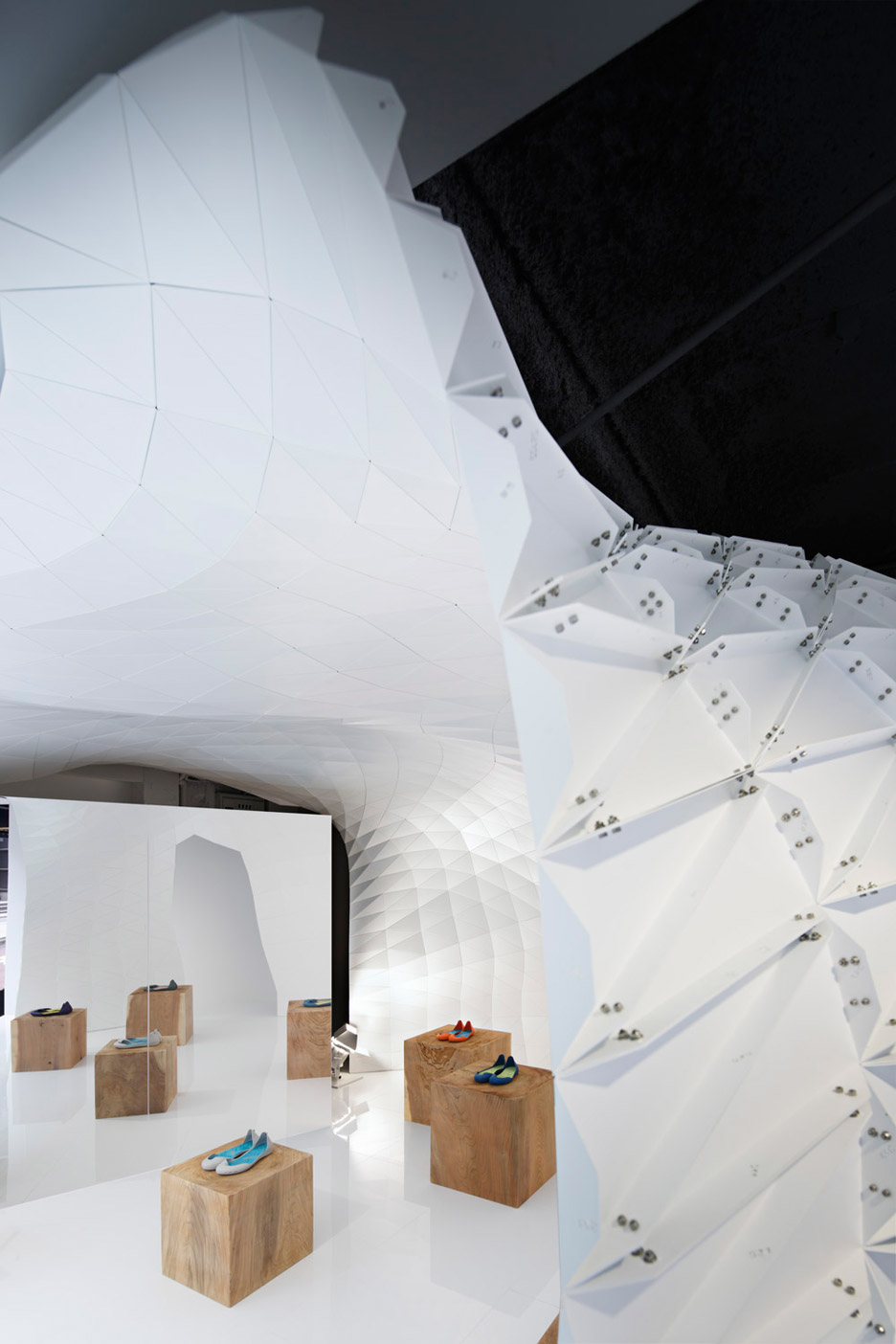
"It should by no means be a precise circlular tent," the designer added. "There might be a rough rock skin on the surface of the cave."
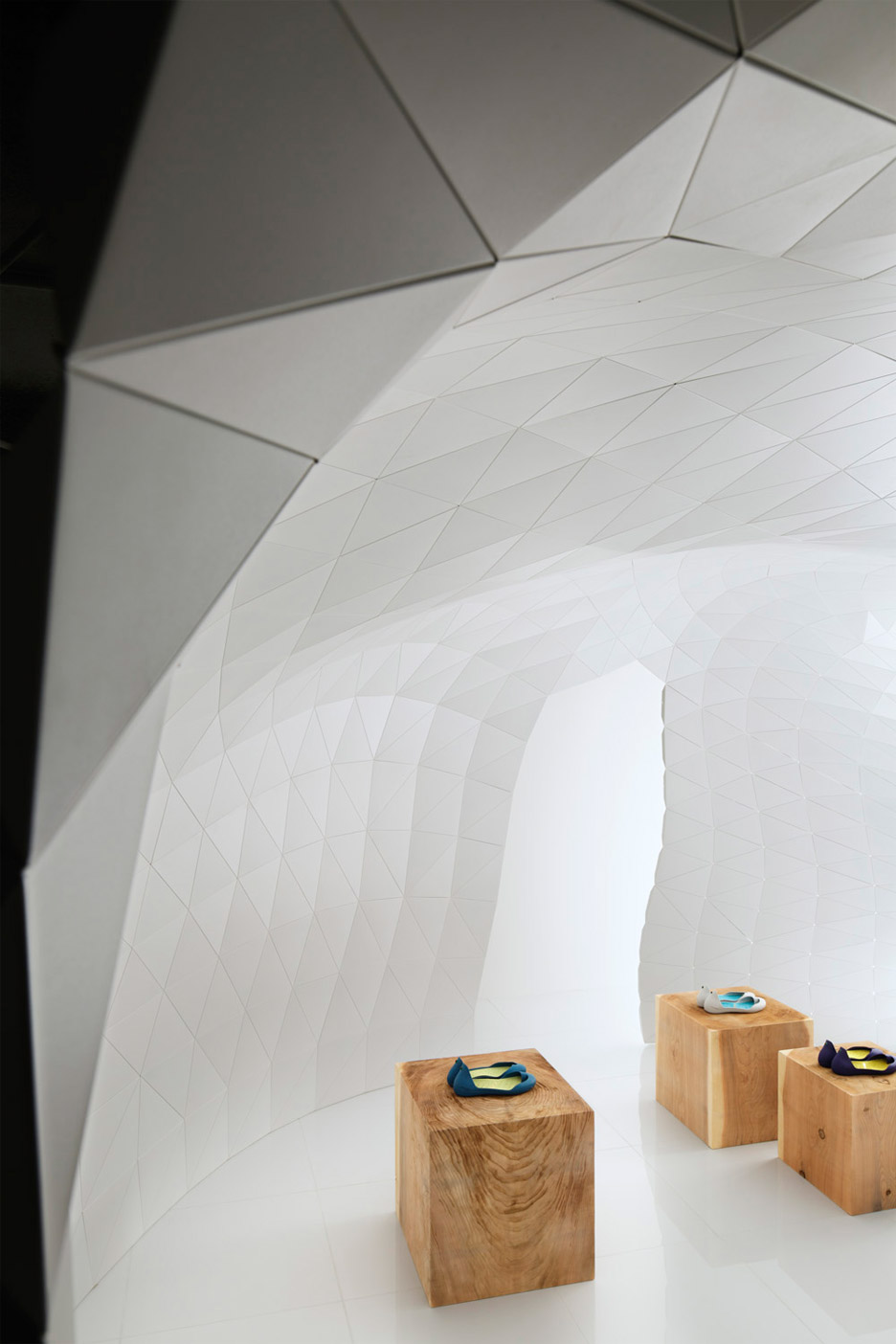
The cave is made from multiple triangular pieces of plastic that have been bolted together from behind to form the effect of an oversized pixellated image.
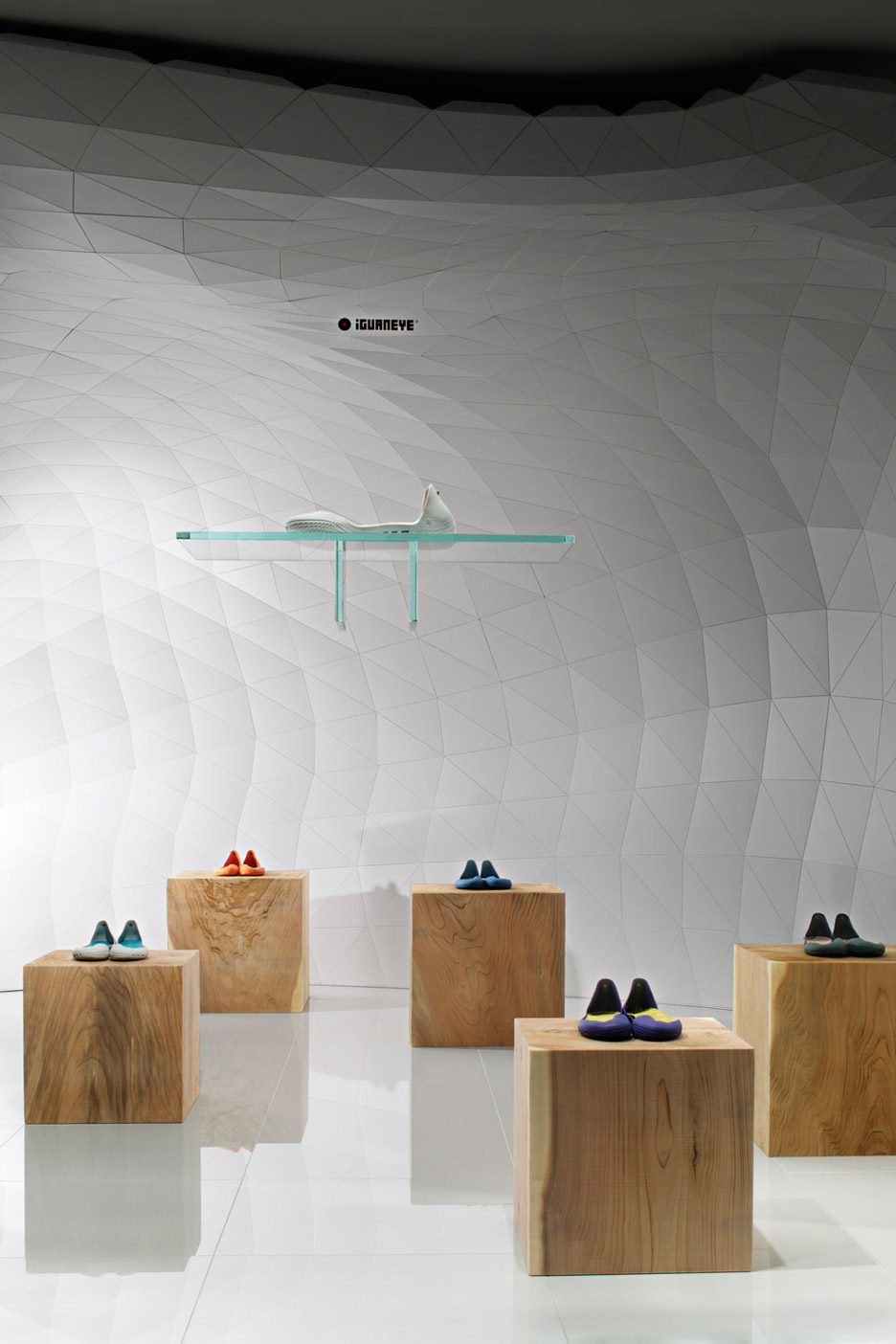
Mizutani installed the shell to "reconstruct the relationship of humans and space", and it serves as an undulating ceiling as well as a backdrop for the shoes. Visitors enter through an oversized archway cut into the shell, which appears to change in colour from white to darker grey as it extends up.
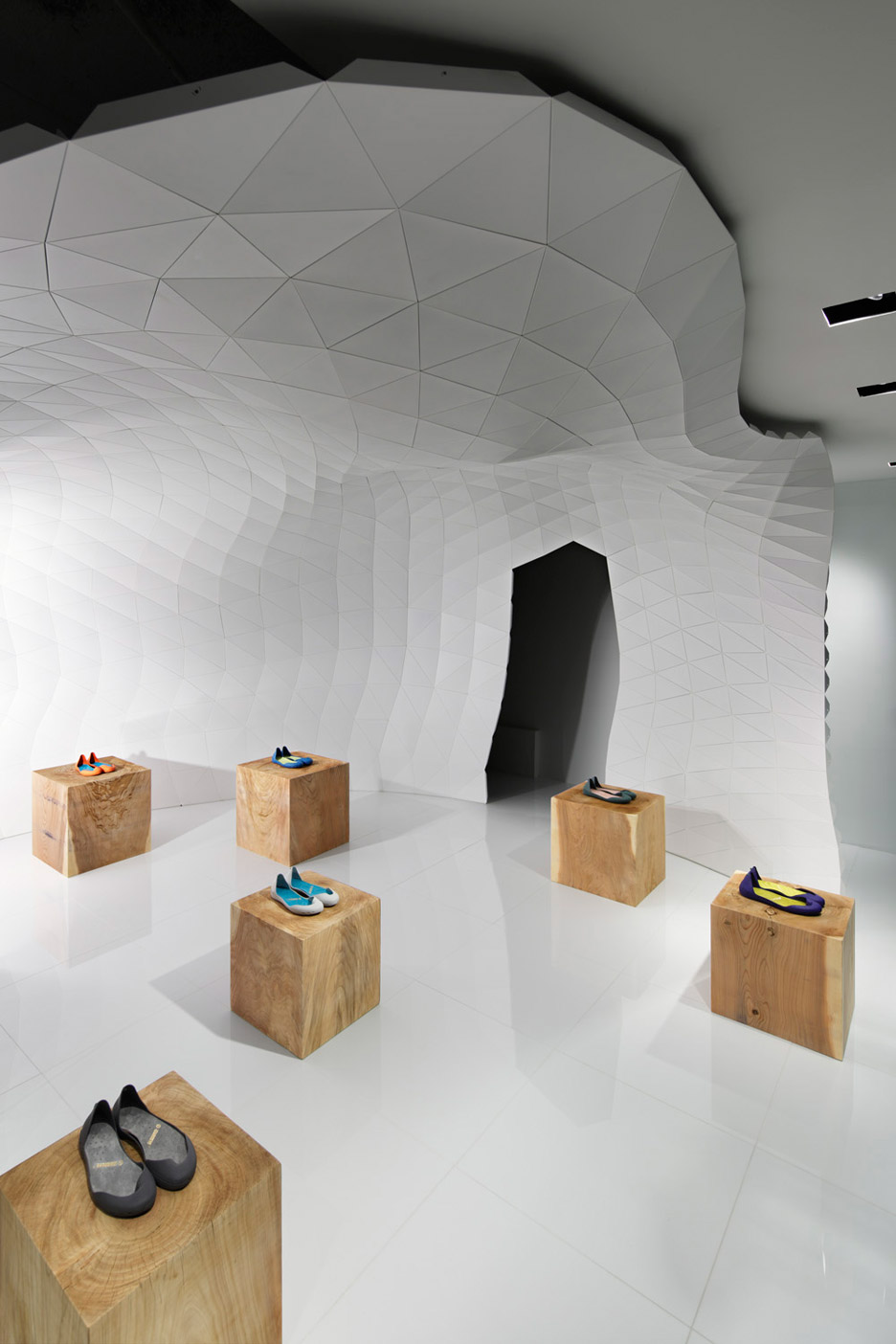
A mirrored section on one side of the shop reflects the entrance and surrounding structure. Cubic wooden display podiums for products are dotted around the store, with shoes presented as single pairs on each one. The rest of the store's interior is painted white and kept minimal, with serving counters hidden from the shop window.
Geometric patterns also featured in Barcelona studio Nábito's tiled interior for a children's shoe store, and in architect Kengo Kuma's Camper Milan store, which displayed shoes on a pale plywood grid.
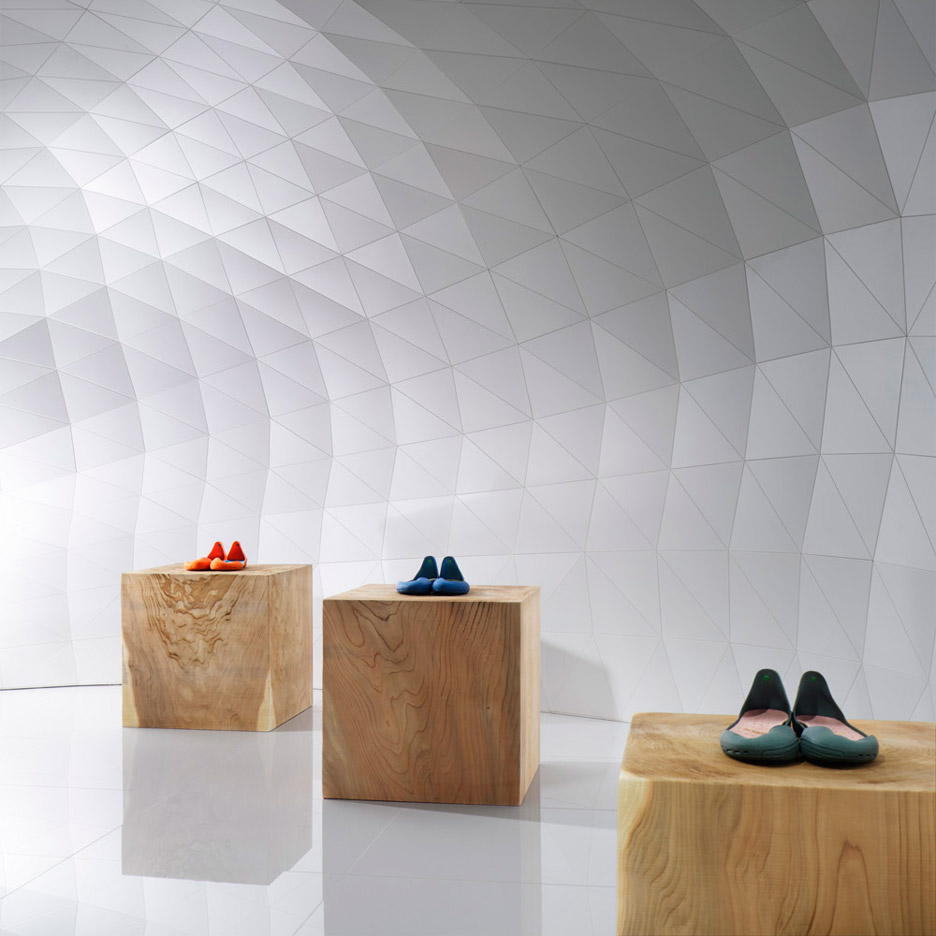
Other recently completed shoe shops interiors include Nendo's spiral-filled interior for Camper's Stockholm store and Australian designer Jordana Maisie's timber-covered boutique for Feit.